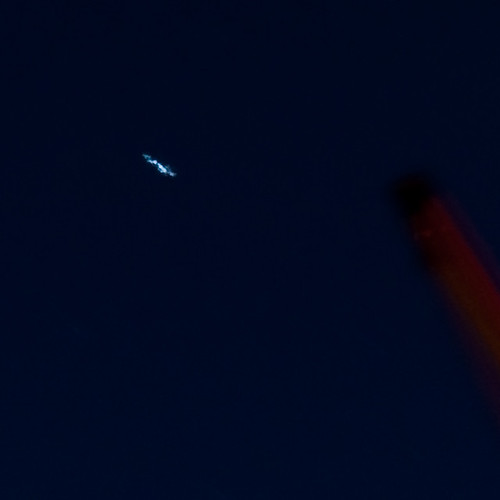Took the boys down the East Pier at Dun Laoghaire this evening to let off a bit of steam in the bracing easterly, back to school in a few days so they’re a little cabin feverish. Anyway, took the opportunity to schlep the 85mm on a tripod (the 85 weighs a ton!) and take a few longer exposures. Result above. But what I didn’t realise was that there’s so much movement in the heavens – the exposure above is a mere 30 seconds, and as you can see from the detail below, there’s quite a lot of movement in that one little star.
The jitter is accounted for by the fresh breeze and the camera being buffeted about the place despite the tripod, but the diagonal movement is due to the turning of the heavens about the Earth. Or is it the other way round?
Copernicus, he knew. 🙂

From Wikipedia:
Copernicus died in Frauenburg on 24 May 1543. Legend has it that the first printed copy of De revolutionibus was placed in his hands on the very day that he died, allowing him to take farewell of his life’s work. He is reputed to have awoken from a stroke-induced coma, looked at his book, and then died peacefully.
Bummer.
If I was smart enough I’d be able to write a piece of software which would filter out the low frequency wind buffeting noise from the image and clean it up a bit, measure the angular change over the given period and figure out what next week’s Lotto numbers are. But I’m not, so I can’t and I wouldn’t anyway. No but seriously, what can you figure out given that the picture was taken over 30 seconds? Distance? Nah. I dunno. Our latitude? ( 53°18’8.79″N 6° 7’34.85″W)

